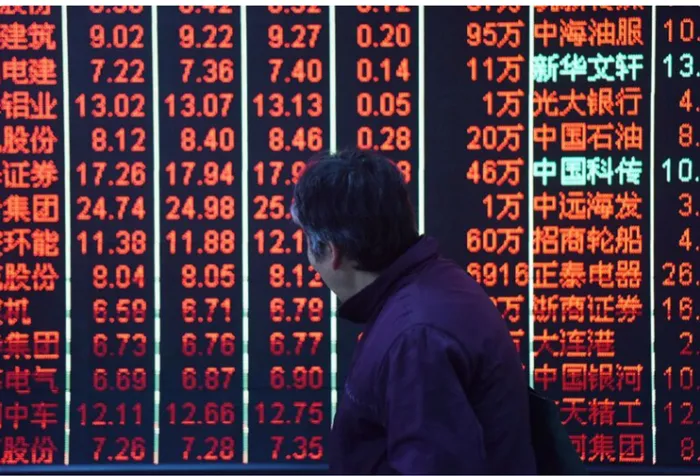Volatility Ahead: Why investors flocking to active management strategies
Analysis

Higher interest rates are pushing up the debt-servicing costs of the world’s biggest economies. Weaker economic growth would likely worsen this position. Bond markets have experienced volatility as a result, and the survey findings suggest investors anticipate more related uncertainty ahead.
Image: File
AS investors around the world acknowledge significant risks in 2025 and beyond, a large majority (75%) also believe actively managed strategies offer value in current markets. An even bigger proportion — four out of five — say they will increase their investment in active strategies over the coming 12 months.
Schroders Global Investor Insights Survey, which polled the attitudes of about 1 000 professional investors from around the world, captured the shift in market sentiment which occurred in the first half of 2025, triggered in large part by US trade policy announcements.
The survey was undertaken from mid-April, a fortnight after US President Donald Trump’s so-called “Liberation Day”, on which initial US tariff policies were declared. Markets fell sharply in response. Investors were asked to rate their greatest concerns on a scale of one to four. The vast majority (63%) cited US trade and tariff policy as their chief worry.
However, economic performance, inflation and higher interest rates also featured. After tariffs, the next three areas of concern — economic downturn, higher inflation and higher interest rates — were broadly equal in ranking.
This ties in with another major source of financial market volatility during the first half of 2025: questions over the sustainability of national debt for major global economies, including the US, Japan and other G7 countries.
Higher interest rates are pushing up the debt-servicing costs of the world’s biggest economies. Weaker economic growth would likely worsen this position. Bond markets have experienced volatility as a result, and the survey findings suggest investors anticipate more related uncertainty ahead.
When asked to rank their assessment of volatility today against previous market shocks, one in four respondents said they expect greater volatility in the coming 12 months compared to both the Covid-19 pandemic and the global financial crisis of 2008.
In public equities, the volatility sparked by US tariff announcements in April was an unwelcome reminder that markets had become increasingly concentrated around US equities, and around giant US tech companies, especially. By the start of this year, global indices, such as the MSCI World, comprised over 70% US stocks.
So when asked which indices posed the greatest concentration risk, three-quarters of investors (74%) cited the US S&P 500 index. The global MSCI World index was the next greatest cause for concern, likely due to its extreme US tilt.
Given the above volatility and the risks perceived by investors, achieving “portfolio resilience” was the goal of the majority of investors (55%), ahead of return generation and income.
“Portfolio resilience” is not to be confused with risk aversion. A majority of investors (62%) are maintaining or increasing their risk appetite in the current environment. This suggests that many see opportunities as well as risks within current volatility.
Four in five investors say they are more likely to invest more into actively-managed strategies in the coming 12 months. This is linked to other findings where investors see active management as better suited to successfully navigating a more complex period in markets than a passive index-tracking approach.
When asked to identify which attributes of active management held the greatest appeal, respondents cited a range of factors, the first of which was the ability to capture returns wherever they arise. Achieving portfolio resilience was the second most valued attribute.
Active management was also seen to bring “deep specialist knowledge”.
Johanna Kyrklund, Schroders’ Group chief investment officer, said: “The wider backdrop is that financial markets are still adjusting back to structurally higher interest rates, made painful in many cases by high levels of debt. This is raising questions about future market trends and the value of passive approaches in a period of greater uncertainty.”
While the high level of confidence in actively managed investments was one of the stand-out themes of this year’s survey, so was the high degree of interest in using a mix of both public and private assets.
When asked which two asset classes they would use to access the best return opportunities, 46% cited public equities and 45% cited private equities. Interestingly, the third asset class cited here (by 40%) was another private market category – private debt and credit alternatives (PDCA).
Again, when it came to generating income, PDCA was a priority, with over 40% of both institutional investors and wealth gatekeepers looking to these assets to meet their income needs. High-yielding publicly traded equities and publicly traded bonds came a close second and third.
Schroders Capital’s co-head of private debt and credit alternatives, Michelle Russell-Dowe, said: “The ability to access diversifying and flexible income through the wide universe of securitised and asset-backed finance provides a valuable extension of the fixed income toolkit for investors.”
* Kondi Nkosi is the country head at Schroders, South Africa.
** The views expressed here do not reflect those of the Sunday Independent, IOL, or Independent Media.